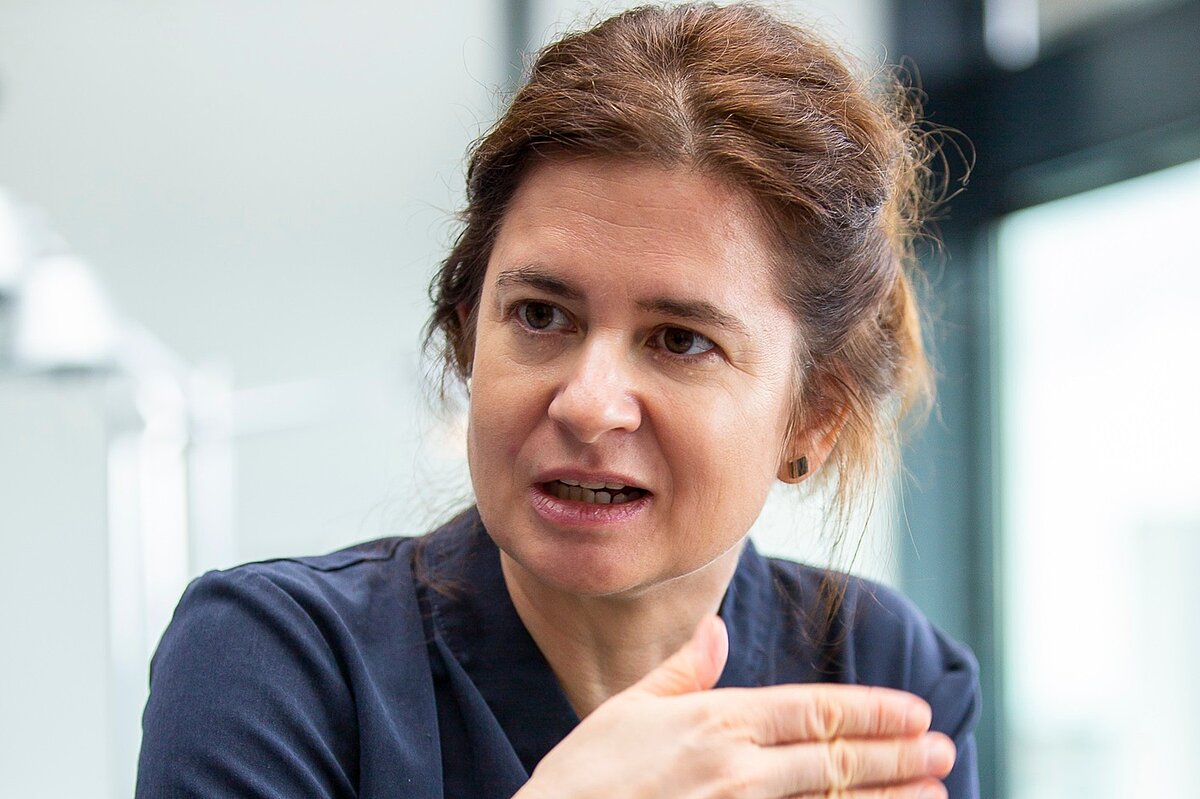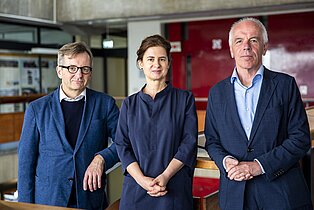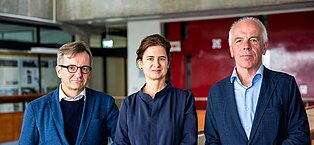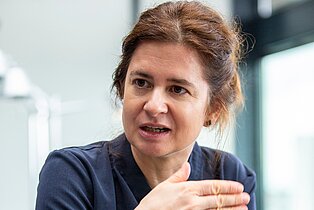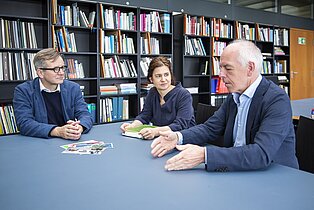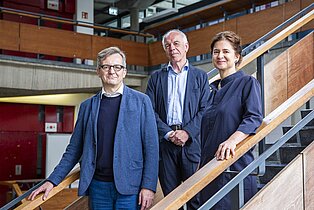Strengthening Interdisciplinary Exchange
What effect does architecture have on people? That is one of the pivotal questions in the field of architectural psychology. Certified psychologist Gudrun Rauwolf has some answers. As a doctoral candidate at the Technical University (TU) of Berlin, Institute for Architecture, Faculty VI Planning, Building and Environment, she has been researching the subject since September 2019. She previously worked as a research assistant at the Institute for Psychology & Ergonomics at TU Berlin.
Rauwolf's doctoral studies are supported by the non-profit Sto Foundation. Together with TU Berlin, it is sponsoring this doctoral position, which is unique in Europe, and will provide a total of €150,000 over the next three years.
Prof. Dr.-Ing. Jörg H. Gleiter, head of TU Berlin's Architectural Theory department, is working with the doctoral candidate. "Architectural psychology remains a black hole of architecture", he explains, adding: "There are no theoretical principles regarding the way material, surfaces, shapes and spaces interact with each other on different levels and what effect they have on people". To make sure that this changes, TU Berlin plans to expand this field of study with additional research projects and to permanently teach and research it.
In this interview, certified psychologist Gudrun Rauwolf discusses the subject of her research.
Ms. Rauwolf, architectural psychology deals with the awareness of the complex effect of architecture, cities and environment on the psychological and physical well-being of human beings. What exactly does that mean?
We are spending our entire lives in a constructed environment. Even the "natural" environment is shaped by the design efforts of humans. That is an crucial influence on the way we experience things and how we behave – and we play an active and a passive role in this process. That is exactly what architectural psychology studies. Our constructed environment does not just impact our physical and psychological well-being, it also influences how well we learn and work and how we interact socially with each other. For example, spatial structures can foster interaction or provide privacy.
Do you have a specific example that allows laypersons to understand your research?
A study by Roger Ulrich from 1984 is very illustrative. It proved that patients recover differently from surgery depending on the view from their room. Those in hospital rooms with views of green trees needed fewer painkillers, felt better and recovered more quickly than the control group which had a window facing a wall. This study triggered further architectural psychological research and fostered evidence-based design research in the health care sector.
Why is the effect of architecture on humans so important? What does it do to the user?
When we are talking about the impact of architecture on people, then we first describe a reactive role, i.e. that we are at its mercy. But it is also important to think about the active role, meaning the appropriation of a room and adapting it to one's needs. Gibson's psycho-ecological theory of perception is helpful in this regard: Humans are shaped by their environment but, by actively extracting information, they intentionally also interact with their environment and impact it.
The users of public facilities in particular cannot adapt these rooms to their needs at will. In that case, anybody who participates in the decision-making, design, planning and construction of these facilities shares a major responsibility. It is especially useful to apply the available architectural psychological methods in these cases in order to anticipate the effects and uses. Changes that have to be made later cost much more than interventions during the planning phase.
Many people are still unfamiliar with this field. Why is it only being researched now?
The impulse to establish modern architectural psychology as a field of research and a branch of environmental psychology originated in the 1960s when society became aware of social and ethical issues in the cities.
There are now additional challenges – caused by the necessity of life cycle-oriented planning, greater flexibility in the world of work, digitalisation and connectedness. "Adaptive architecture" – meaning buildings that adapt to their surroundings, objects and users and can be optimised by them, or that can be controlled based on internal data – is developing into a multidisciplinary field. This provides an opportunity for a productive dialogue between the different disciplines of architecture, urban planning, IT, psychology, sociology, medicine, ecology and economics.
Why did you apply for this doctoral position? What makes architectural psychology so interesting to you?
As a certified set designer, I designed rooms that were intensely focused on a play – but it was part of an "artificial" production. When studying psychology, I got to know the empiric side of space and not the poetic side. Connecting empiric research, architectural theory and design practice is very important to me. How do spaces, objects and visual displays control processes and create meaning and interpretation in our behaviour and the way we experience things through their specific presence? These are central questions that have to be researched. I'm working on making design expertise usable across many disciplines. My doctoral position is rooted in the field of architectural theory. Using a transdisciplinary approach, it applies my scientific and artistic interests to the interplay between spatial and environmental effects and design very well.
Architecture is a broad field. On what types of building does your research focus?
At the start of my work, I am researching educational facilities and healthcare buildings. I believe that education, health and spatial orientation are of great social importance. In the field of empiric educational research, psychology has played an important role when examining the quality of educational processes and it has advanced the debate on new didactic concepts. In light of the school construction wave in Berlin, it seems like a good time to try out hypotheses and initiate empirical studies.
In healthcare buildings, on the other hand, complex organisational patterns that combine something very private with a workplace meet a very high degree of technologisation. The goal is to not only optimally support the staff in its efforts to provide flawless medical care but also the therapeutic processes of the patients. The length of a patient's stay and their well-being, use of medication and the time required for care can all be influenced by architecture. Architectural psychology can play its part by using scientific methods to take advantage of spatial and process variables.
What exactly is your approach?
I follow the approach of evidence-based design research. That means the practical execution is based on the latest empirical findings resulting from methodical research. Evidence-based design research follows a formal process. Hypotheses are established based on available research and project requirements. Using a matrix that has to be developed, the effect of influencing variables on the observed target variables can be evaluated. And then we'll analyse the data: Maybe some aspects of an intervention were successful while others were not. Design recommendations, which can be used and adapted to current demands, will then be derived from findings that were systematically compiled.
On my end, that first means extensively researching the existing literature, analysing research results and then classifying them. Then I come up with hypotheses and initiate cooperative projects with architects.
What do you hope to achieve? And what do you want to do once you have earned your doctorate?
My central concern is the productive exchange between various disciplines. I want to mediate between different (scientific) languages, with the goal of coming up with a shared language and, ideally, translating that into practical, specific architecture.
And I very much would like to establish the subject of architectural psychology and evidence-based design research in an academic context – both in terms of research and being taught. And the Technical University of Berlin is a great place to do that.
Ms. Rauwolf, thank you for this interview.
Interview with Prof. Peter Cheret, Foundation Council Member for Architecture of the Sto Foundation, Prof. Dr.-Ing. Jörg H. Gleiter, head of the architectural psychology department at TU Berlin and certified psychologist Gudrun Rauwolf on her doctoral studies in the field of architectural psychology at TU Berlin.


